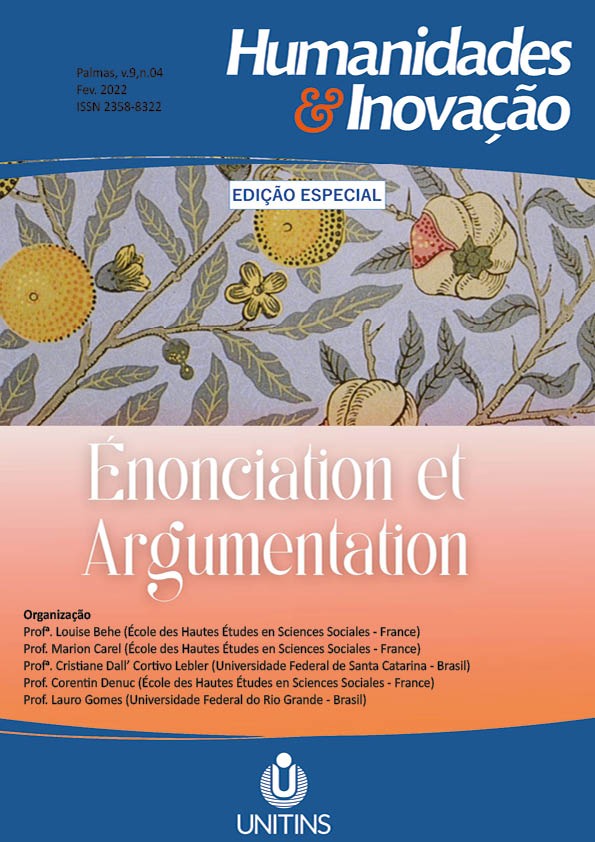PROSODIA Y MIRATIVIDAD, UN ANÁLISIS FUNDADO EN EL ENFOQUE DIALÓGICO DE LA ARGUMENTACIÓN Y LA POLIFONÍA (EDAP): A PROPÓSITO DEL MARCADOR DE DISCURSO MIRÁ
Abstract
Con el sustento teórico del Enfoque Dialógico de la Argumentación y la Polifonía (EDAP) –García Negroni (2009, 2016, 2019), García Negroni y Libenson (2015, 2016, 2020, 2021), García Negroni y Hall (2020), Caldiz (2016, 2019, 2020)–, nos proponemos ahondar sobre la relación entre la prosodia y la miratividad. Intentamos poner en evidencia la manera en que la entonación del discurso acompaña y acentúa los sentidos relativos a enunciaciones mirativas. Partimos de la hipótesis que sostiene que los diversos tipos de enunciaciones mirativas descriptos por el EDAP podrían asociarse a formas prosódicas específicas. Para ello, se lleva a cabo un análisis cualitativo y cuantitativo de casos de discurso espontáneo de español de Buenos Aires.
References
AIJMER, Karin et al. Pragmatic markers. In: Handbook of pragmatics highlights, Amsteram, v 8, 2011. p. 223-247.
AIKHENVALD, Alexandra. The languages of the Amazon. Oxford University Press, 2012.
ARGUEDAS, María Estellés. ¿Se puede determinar el grado de gramaticalización de marcadores de discurso a través de la prosodia? Un estudio preliminar a partir de corpus orales del español. Revista Normas, n.7 (2): p. 227-252, diciembre de 2017. Disponible en:
http://dx.doi.org/10.7203/normas.v7i2.11211 (revisado en mayo de 2021)
BAKHTIN, Mikhail. Estética de la creación verbal. Buenos Aires: Siglo XXI, 1982.
BRAZIL, David. The Communicative Value of Intonation in English. Oxford University Press. Reino Unido, 1997.
CABEDO NEBOT, Adrián. Sobre prosodia, marcadores de discurso y unidades del discurso en español. Evidencias de un corpus oral espontaneo. ONOMÁZEIN: revista de lingüística, filología y traducción de la Pontificia Universidad Católica de Chile, n.28, p.201-213, diciembre. 2013.
Copyright Notice
The submission of originals to this periodic implies in transference, by the authors, of the printed and digital copyrights/publishing rights. The copyrights for the published papers belong to the author, and the periodical owns the rights on its first publication. The authors will only be able to use the same results in other publications by a clear indication of this periodical as the one of its original publication. Due to our open access policy, it is allowed the free use of papers in the educational, scientific and non-commercial application, since the source is quoted (please, check the Creative Commons License on the footer area of this page).











